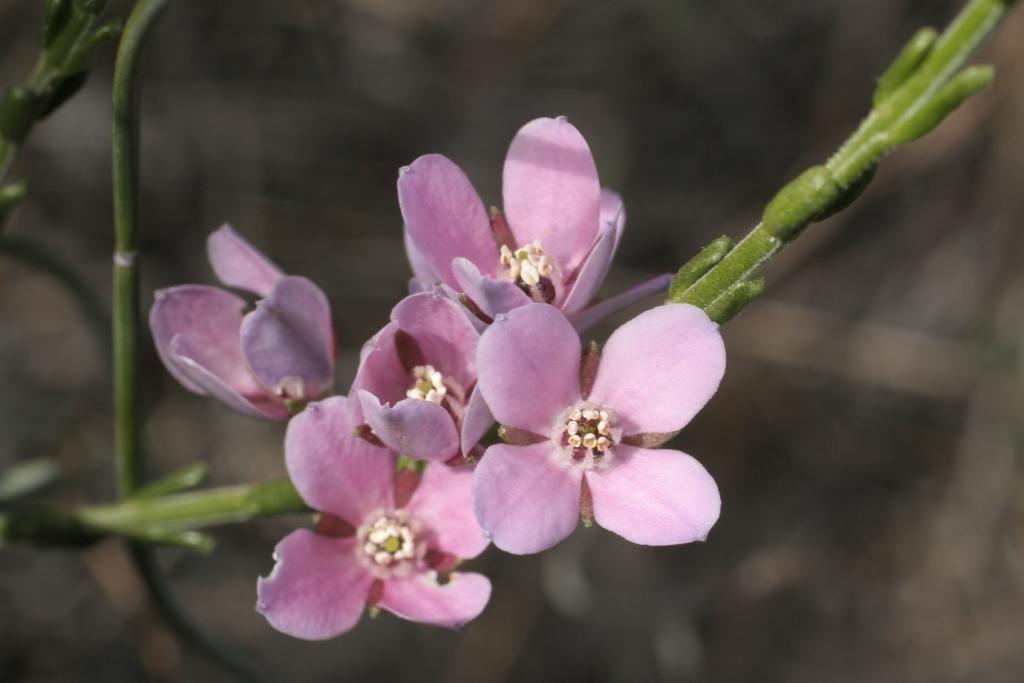Cyanothamnus coerulescens subsp. coerulescens
Usually a spindly shrub to c. 60 cm high (rarely more), glabrous to puberulous throughout; branchlets glandular-warty, often almost leafless. Leaves simple (in Victoria), subterete, entire, glandular-verrucose to nearly smooth, apex rounded, 1.5–8 mm long, 0.5–1.5 mm wide. Flowers axillary or terminal on short shoots, usually solitary, pedicel 2–5 mm long; sepals deltoid to ovate, imbricate, 1.5–7 mm long; petals imbricate, 3–9 mm long, midrib not raised, blue to pink-mauve to white, often drying light blue, persistent; stamen filaments sparsely ciliate; style hairy, longer than globular stigma. Follicles 3–4 mm long; seed c. 2.5 mm long, black-grey, dull, minutely rugose. Flowers mostly Aug.–Nov.
LoM, MuM, Wim, GleP, RobP, Gold, GGr, DunT. Also WA, SA, NSW. Occurring in western Victoria in drier areas in mallee woodland and heath on sand or sandstone, with a disjunct occurrence at Wedderburn.
A variable subspecies that grades to some extent into subsp. spicata Paul G.Wilson and subsp. spinescens (Benth.) Paul G.Wilson, both confined to southern Western Australia.
Duretto, M.F. (1999). Rutaceae. In: Walsh, N.G.; Entwisle, T.J., Flora of Victoria Vol. 4, Cornaceae to Asteraceae, pp. 153–197. Inkata Press, Melbourne.
 Spinning
Spinning